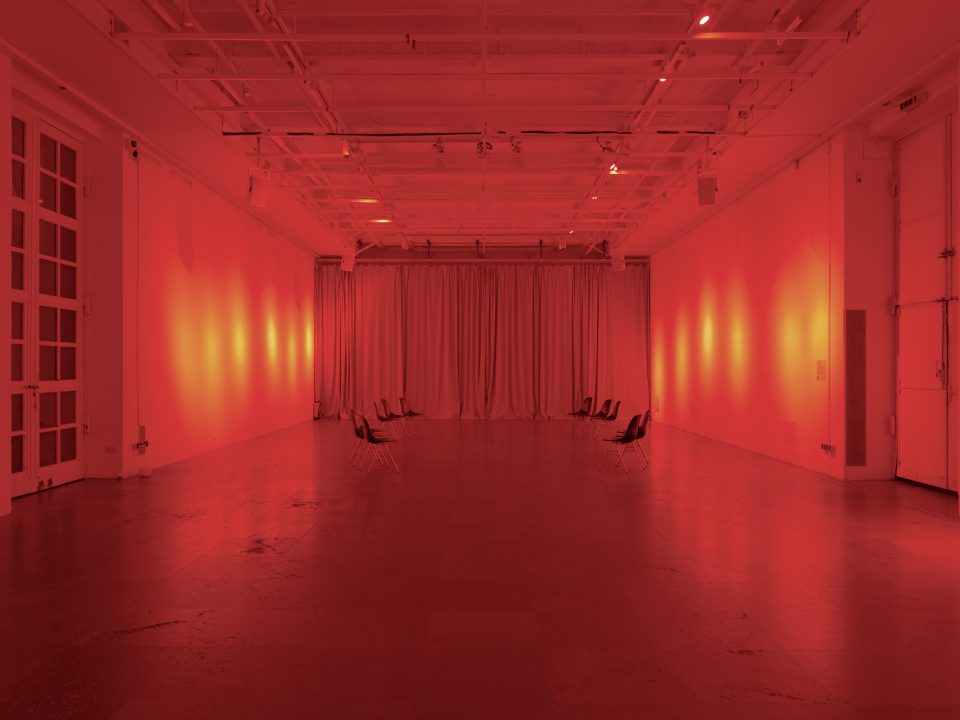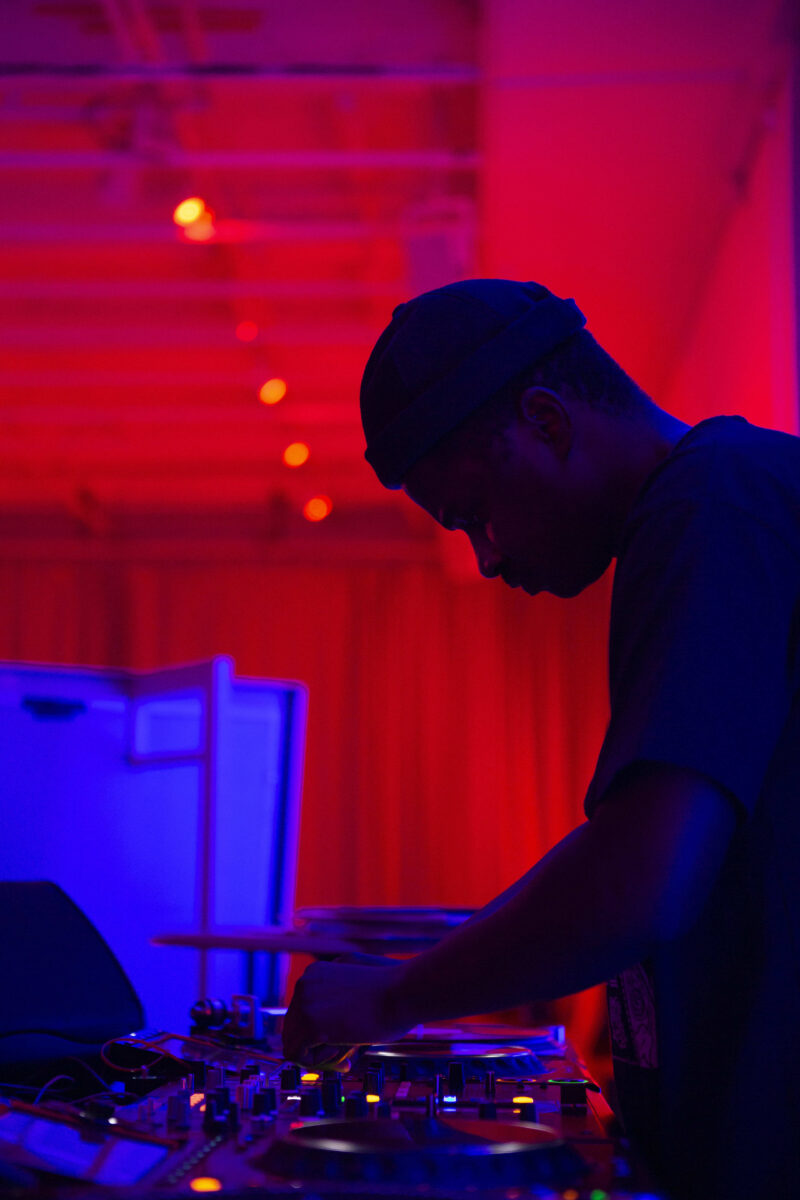
A transcript of a conversation between artist Lamin Fofana and Curator Sarah Miles on his installation in the Terrace Hall of Haus der Kunst. They talk about unconventional spaces, the artist’s practice and his sources, the tyranny of Western music theory, contradictions in the idea of a pure tone and much more.
Sarah Miles It’s great to catch you, Lamin, to talk a bit about your sound installation that's in the Terrace Hall in Haus der Kunst at the moment. You opened it in July with a live performance and the work will be in the space until March next year. It's called a call to disorder and the live performance that you gave in July to activate it was called ode to impurity.
Lamin Fofana Yes. a call to disorder, which is lifted from the Stefano Harney and Fred Moten book, The Undercommons: Figutive Planning & Black Study, is part of an ongoing project in which I focus on the wild, uncontrollable, extramusical side of composition, refusing to put things in order and stretching the boundaries between noise and music.
SM What was your reaction when you were first invited to do this commission for a room in the museum that isn't really a gallery, but rather a public space where people are often walking through, going from the Middle Hall to the Goldene Bar, or the other side of the museum?
LF I like the idea of working with unconventional spaces where you're not expecting certain things to happen, and the Terrace Hall is a passageway, a transitory, or in-between space. So I like that idea of situating sound and artistic work there, in a space that's just between the inside of the museum and the outside. Again, stretching the boundaries between conscious and unconscious, between one place and another, and between what we see and what we hope to see, what has happened and what we hope will happen. And if you spend time in that space, hopefully you'll be able to walk away with a few things.
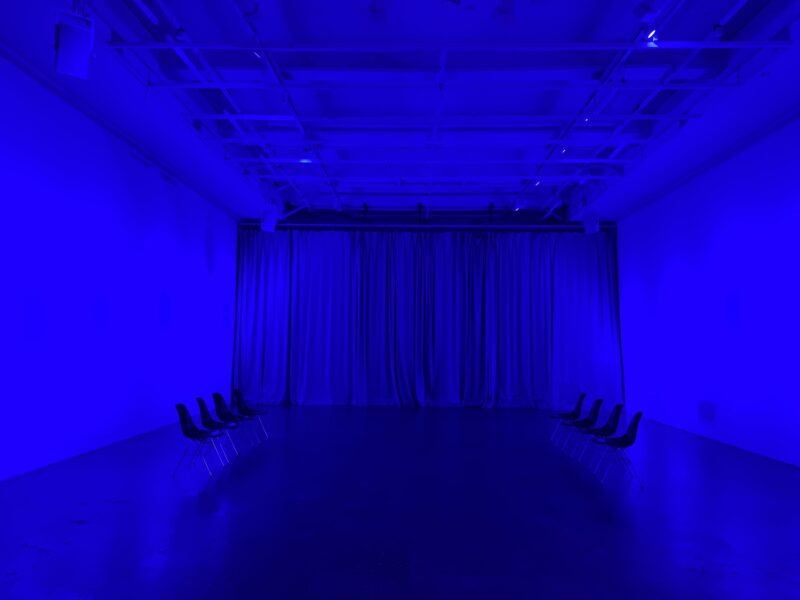
SM Can you draw a comparison between a room with a sculpture or a painting and your sound piece a call to disorder? What specific qualities do you think sound brings to a space?
LF Yes, I think sound activates space differently. Especially when people enter the space, they are completely surrounded by the sound and it's different from location to location. When they are in the space, what they experience, the sound finds its way into them and so does the rest of the exhibition, the other elements, the light, the scent, the atmosphere because it's multisensory. You are entering a piece of work that is also finding its way into you, through you, through your ears and you're going to walk away with a memory or feeling. The way I work with sound and present sound is to create a space that you enter into and spend some time inside with other people. You become not simply an audience member, but also a participant in an ongoing experiment.
SM I've also heard you talk about it as wanting to create a refuge. So I guess that ties into what you've just been saying.
LF Yeah. I hope this space is a refuge, or feels, serves as a refuge from the everyday, the ongoing drama that surrounds us. The constant immediacy of everything. The Terrace Hall, it's an in-between space, it's a break between the inside and the outside. So when you pass through it, you take a break.
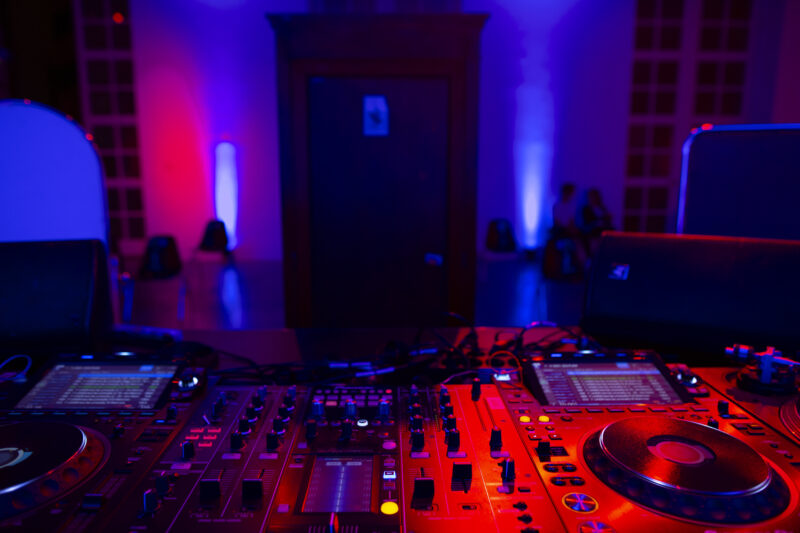
SM Can you tell us something about that – I mean, you've just touched on it. The title, besides the reference to The Undercommons, does it relate somehow to current times?
LF Yes, in a way I'm responding to our current times, but it's something that has a longer view into the past and into the future at the same time. It's simultaneously in multiple times, I guess. It's not here to provide a coherent answer or anything. It's just a response to the ongoing catastrophe. Perhaps it's a question, or like it’s responding with a question and not providing an answer. It's the situation we find ourselves in, living in a catastrophe and learning how to sculpt meaning out of a situation that is senseless and defies meaning because that is what our current times, it defies meaning, but we're still here. We're moving on. It’s been like that for a long time.
SM So almost more, like you said, a question and a sort of challenge to people.
LF Yeah.
SM How do you expect people to behave in the space? And also will the sound change as they move around it?
LF I hope people are comfortable, relax and in focus. I hope they are receptive and open when they enter the space, and comfortable to just sit and listen. I keep using the word comfortable. But yes, be as comfortable as possible and be open. That's all.
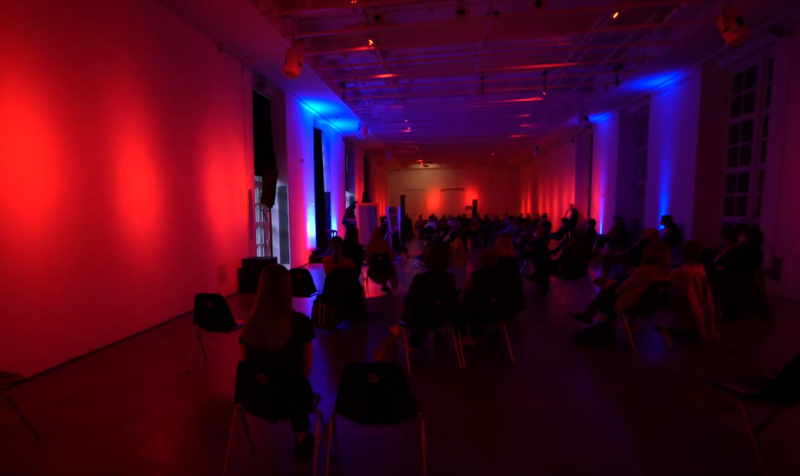
SM And does the sound change? If you sit in different parts of the room?
LF Yes, it's an unconventional space and the speakers are placed in somewhat unusual angles. Depending on where you stand in the room, you get a different sense, and perhaps a different feeling about the sound you're listening to. Because one thing I focused on was, more so than loudness and dynamics, was much more about clarity, like, how the sound travel, moves around the space. So, depending on where you are sitting or standing, you might feel certain frequencies differently. It affects the way what you'll hear it and perhaps how you are respond to it, because I guess that's one of the main things about this. It provokes response.
LF Can you share a bit about how you made the piece?
LF Well, part of my practice, involves reading history and poetry and spending a lot of time with written works and texts, reading about movements, and some of those works generate feelings and ideas and they point me in a direction sonically and I pursue that. I collect sounds and I record. I do field recordings, and I do production, composition, and I use archival recordings, I pay attention to things that I am surrounded by while I'm working. Usually I get an idea or feeling or a certain thing that I want to express, sometimes it takes a long time to get it together but most of these pieces came together fast. I guess I had been walking around with them for a long time or I have been in some way thinking about these ideas and then you read a writer who articulates that in a clear, unambiguous way and you are able to point directly to that.
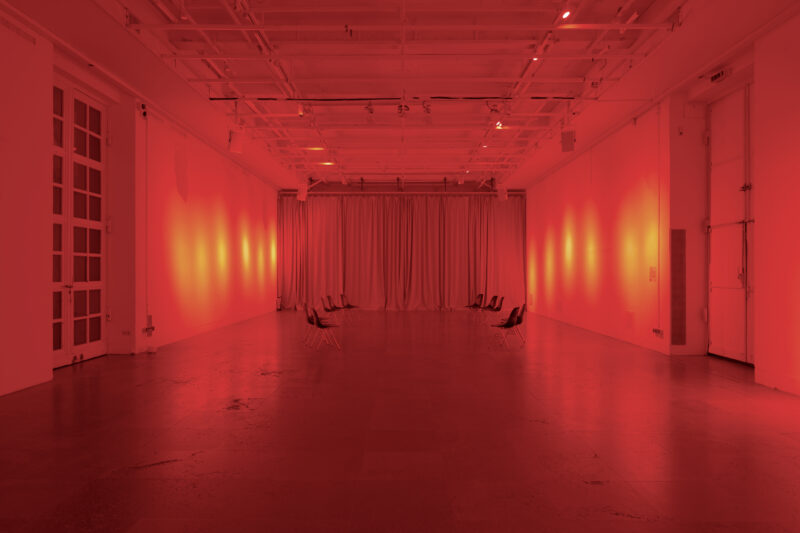
SM The piece is made up of two parts with subtitles of shafts of sunlight, which is the first part and that's 11 minutes long and then ode to impurity, which I think is 29 or 30 minutes long. Can you share something about the meaning behind those subtitles?
LM Yeah. Well, shafts of sunlight is a title inspired by the work of the late Barbadian poet and scholar, Kamau Brathwaite whose work is massive. I don't even know where to begin, but one of his ideas is about process. While you're working, digging and listening to deeply, getting lost in the depths, you may come across an idea, some inspiration and it’s simply about those moments, like some clarifying moment and it's almost like a burst of light from the sky, light bursting through clouds, those moments. So shafts of sunlight is that for me. And ode to impurity, that one is a lot more dense, because there are multiple meanings for that one, but what I can say is that it's basically a negation of tone or pure tonality. Basically looking at how white supremacy is upheld by the way we adhere and uphold classical music theory in composition and production or performance. Music theory is not a universal thing. It's a very specific, culturally specific thing, which is 18th century European art music. ode to impurity is also inspired by Fred Moten, Black and Blur, the first volume of his own trilogy, consent not to be a single being. Just look in the earlier chapters in that book, talking about the Black Radical Tradition through the lens of Cedric Robinson, through the lens of CLR James, and of course Édouard Glissant. So, like I said that there are a few things I could say about that title, but one of the things that I was responding to was like, how do you respond to the tyranny, violence and brutality of classical music theory and European imperialism and expansionism culturally and economically all over the globe. So, music theory basically, the site of musical composition is a site of struggle and resistance, constantly trying to figure out ways to sabotage that or obliterate it by exposing certain contradictions in the idea of a pure tone.
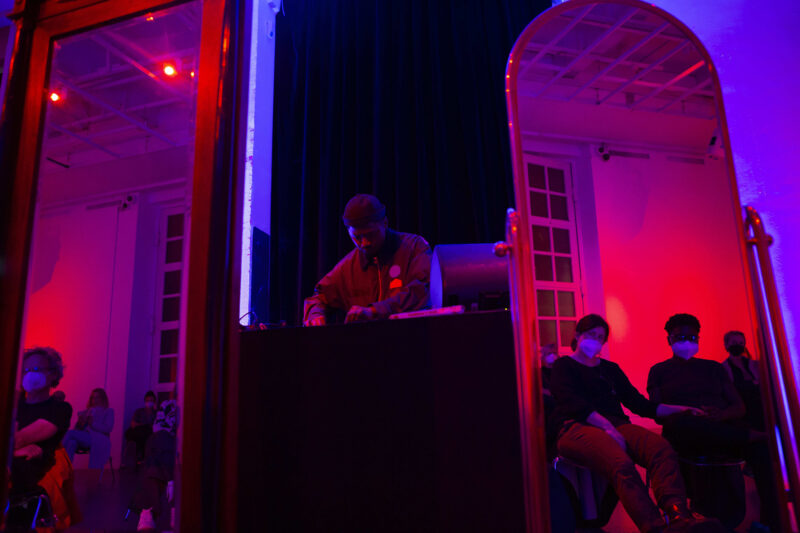
SM Does that connect also to this idea of the extra-musical that Moten and Harney talked about in The Undercommons, how harmony is arbitrary?
LF Yes, absolutely and I think that's Moten and Harney extending and stretching ideas from people like Amiri Baraka and Nathaniel Mackey, like, the world of music and of sound could be a lot more richer. It could be a lot more deeper and more meaningful, if we all don't just adhere to this simple classical music theory. If that's the only way we enter music, then it's a very narrow way. So yes, the extramusical idea is a practice beyond just paying attention to African music theory or say, Indian classical music, or say, jazz, techno, hiphop, or whatever, with some of it pushing far beyond the confines and rules even while using Western instruments and technology. I like the idea of the extramusical, as Fred puts it that music is happening even before the musician begins to play, even before they hit the first note, as the people are entering the space, greeting each other. So when I'm making ode to impurity, the idea is also of creating some kind of sound bed and letting all of the musical detritus fall in. It's not just recording the tones but also the sounds around me, and also added on to that the layers of the texture of touching the keyboard, and so on. Anyway. So that's the extramusical, like all of the things that goes unrecorded is recorded.
SM There’s something that really stuck out for me, when I was spending time with the work, these aquatic sounds, very deep echoey submarine sounds. Can you share a bit more about those?
LF It's something echoing, going deeper and looking for those submerged voices, as Kamau Brathwaite put it. Not just the those sidelined, marginalized voices that we often don’t hear, but also lost voices, buried voices, and it's echoing that. I’ve been reading and thinking about Kamau Brathwaite, who also talked about the physical meteorological link between West Africa and the Caribbean, similar to the link in the Mediterranean between Southern Europe and North Africa. Think about the plume of dust that's blown from the deserts of North Africa on to like, the Mediterranean and the harmattan winds that blows from West Africa into the Atlantic and the Caribbean between December and February every year. It’s something pointing towards the interconnectedness of things.
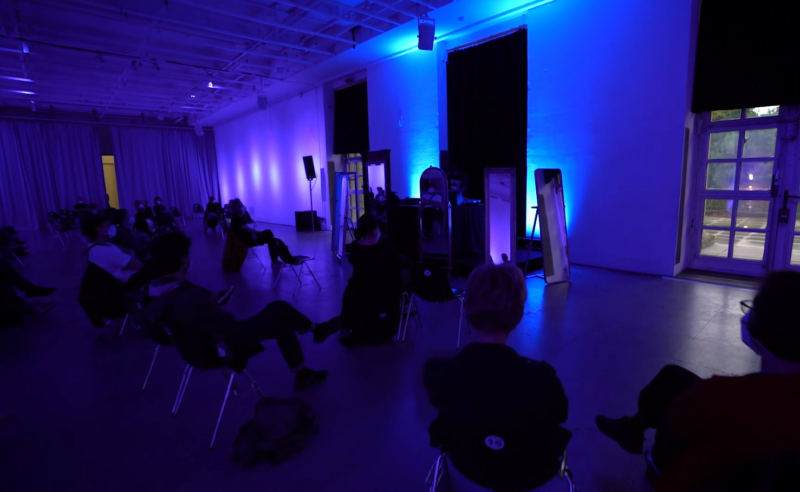
SM And so that’s where you're at right now and where you're heading? Can you share already something about what you're planning for the next instalment of the work?
LF Next, it's a continuation from the previous piece. It's a continuation thinking about this, the ideas of universality and the idea of solidarity, and in interconnectedness, these ideas and how, in this particular time, how do we come together? What does coming together mean and how do you do a collective listening event in this particular time, those are the questions.
SM I also want to mention that your work isn’t only in the Terrace Hall. You're also creating sounds for Haus der Kunst now for the whole year to accompany content online. So in a way, your sound is becoming the voice of Haus der Kunst. How did you feel about this idea when we first proposed it to you?
LF I like the idea of presenting music in places where you don't usually find those kinds of music. Like the idea for this composition, I like the idea of them traveling beyond the confines or beyond the location of the museum and going online, accompanying interviews or pieces, that this music is going to be in response, in conversation with other things is exciting to me. It is like my pieces, they’re jagged and unpredictable so I am looking forward to that. I'm looking forward to seeing in what new contexts they will appear.
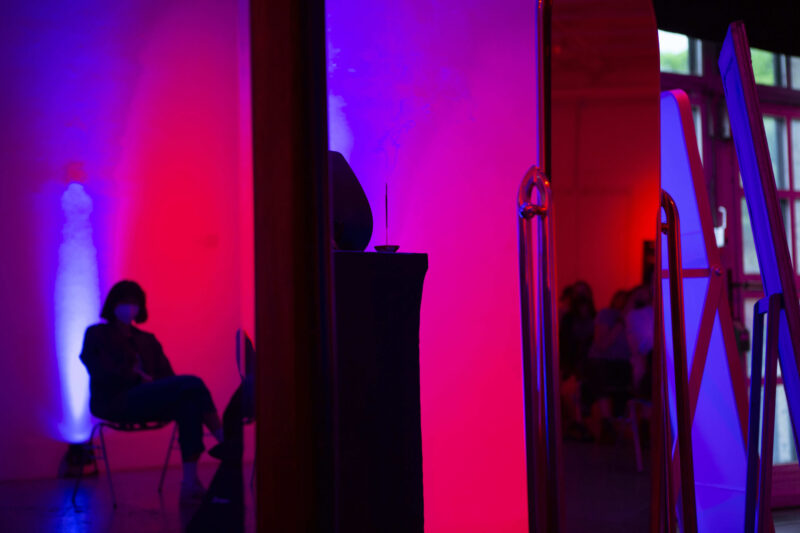
SM We’re looking forward to hearing a lot more. So for the moment, if people are visiting Haus der Kunst, a call to disorder is installed in the Terrace Hall and the work is around about 40 minutes long with the two parts. I realized I didn't ask, you mentioned before there's also a scent in the space, when you were saying how it's multisensory, and also a very specific choice of lights and changing colours. Can you share what was behind your choices?
LF Oh, yes. As I mentioned in the two pieces that are playing right now in the Terrace Hall, shafts of sunlight which is the first 11 minutes of the total 40 minutes. For the first 11 minutes the light is blue, deep blue and I think it's the peaceful side of things. Overall, it's peaceful, but the second half is ode to impurity, which as I was talking about earlier, deals with music theory, tyranny, and it's the red light, like how that violence of, say, narrowing the definition of music, the light responds to that as it becomes bright red because the extramusical elements are almost screaming so, I think there's a level of intensity for that one. Yeah, it's intense, but I think it’s dissonance and the estrangement. It's something we inhabit. So it's part of the confusion we have at the moment, like the disorderliness passing as order. And so it's a longer piece that I hope when you enter you are able to engage with and listen and you come out hopefully a little bit transformed. That's what I can say about the lights and the pieces yeah.
SM Thanks Lamin. It's been really good talking to you and we’re really looking forward to the next instalment.
LF Yes, thank you.
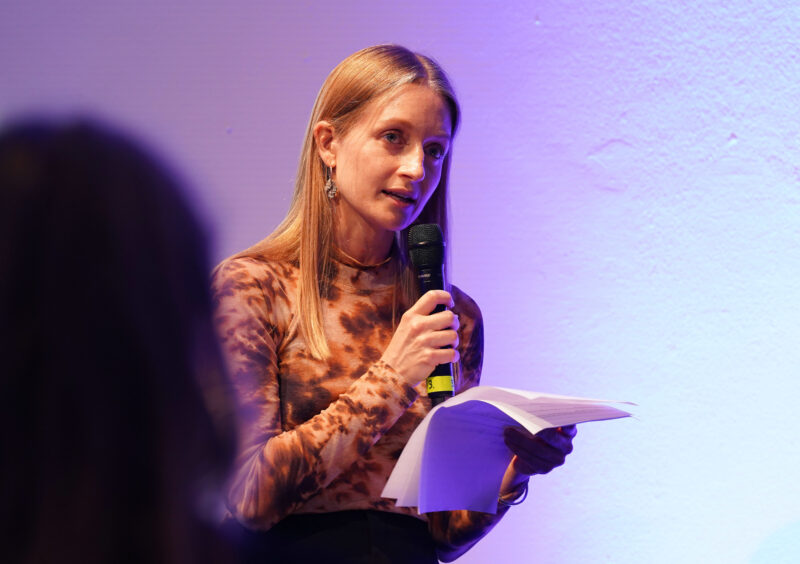
Further reading
Alissa Trotz (Hrsg): The Point is to Change the World. Selected Writings of Andaiye, 2020
Amiri Baraka: S O S. Poems 1961–2013, 2014
Dionne Brand: A Map to the Door of No Return. Notes to Belonging, 2001
Dionne Brand: Ossuaries, 2010
Kamau Brathwaite: Born to Slow Horses, 2005
Kamau Brathwaite: The Arrivants. A New World Trilogy, 1973
Stewart Brown (Hrsg): The Art of Kamau Brathwaite, 1995
Octavia E. Butler: Bloodchild and Other Stories, 1995
Aimé Césaire: Discourse on colonialism, 1950
Constance Classen: The Deepest Sense. A Cultural History of Touch, 2012
Samuel R. Delany: Aye, and Gomorrah. And Other Stories, 2003
Samuel R. Delany: The Motion of Light in Water, 1988
Édouard Glissant: Poetics of Relation, 1990
Wilson Harris: The Guyana Quartet, 1985
Saidiya Hartman: Lose Your Mother. A Journey along the Atlantic Slave Route, 2006
Nathaniel Mackey: Discrepant Engagement. Dissonance, Cross-Culturality and Experimental Writing, 2009
Katherine McKittrick (Hrsg): Sylvia Wynter. On Being Human As Praxis, 2015
Julius S. Scott: The Common Wind, 2018
Toni Morrison: Beloved, 1987
Fred Moten: Black and Blur. Consent not to be a single being, 2017
Fred Moten/Stefano Harney: The Undercommons. Fugitive Planning & Black Study, 2013
Cedric Robinson: Black Marxism. The Making of the Black Radical Tradition, 1983
Walter Rodney: The Groundings with My Brothers, 2019
Sylvia Wynter: No Humans Involved. An Open Letter to My Colleagues. 1994
